- عنوان کتاب: Theoretical Physics Compact III -Quantum Mechanics
- نویسنده: Wolfgang Cassing
- حوزه: مکانیک کوانتومی
- سال انتشار: 2025
- تعداد صفحه: 281
- زبان اصلی: انگلیسی
- نوع فایل: pdf
- حجم فایل: 4.93 مگابایت
این کتاب، یک کتاب درسی در مورد مکانیک کوانتومی ارائه میدهد و به ویژه برای دانشجویان کارشناسی در سال دوم یا سوم تحصیل در رشته فیزیک نظری مناسب است. در بخش اول، خلاصهای کوتاه از مکانیک کلاسیک و محدودیتهای آن با اشاره به مشاهدات فیزیکی که با (یا در تضاد با) تفاسیر درون مکانیک کلاسیک در تضاد هستند، ارائه شده است. تلاشهای اولیه برای گسترش فیزیک کلاسیک با شرایط مرزی اضافی نیز مورد بحث قرار گرفته است. در بخش دوم، مکانیک کوانتومی مقدماتی برای یک ذره واحد معرفی شده و تفسیر آماری تابع موج آن، که از معادله شرودینگر در حضور نیروهای خارجی حاصل میشود، ارائه شده است. نشان داده شده است که چگونه میتوان مشاهدهپذیرهای کلاسیک را در نمایش فضای فاز به عملگرهای مکانیکی کوانتومی که در یک فضای هیلبرت انتزاعی از توابع موج عمل میکنند، ترجمه کرد. سپس کمیتهای مشاهدهپذیر مانند تکانه، تکانه زاویهای یا انرژی توسط مقادیر انتظاری عملگرهای مربوطه تعریف میشوند. برخلاف مکانیک کلاسیک، توالی اندازهگیریها روی مشاهدهپذیرهای مختلف به طور کلی قابل تعویض نیست. این امر در جابهجاگرها بین عملگرهایی که جبری مشابه براکتهای پواسون در مکانیک کلاسیک دارند، منعکس میشود. یک مثال برجسته، رابطه عدم قطعیت بین موقعیت و تکانه است که بیان میکند حاصلضرب عدم قطعیت در موقعیت و عدم قطعیت در تکانه در مکانیک کوانتومی حد پایینی دارد و برای بستههای موج آزاد با گذشت زمان افزایش مییابد. مثال دیگر، تکانه زاویهای است که اجزای آن جابجا نمیشوند و این واقعیت را نشان میدهند که مرتبه چرخشها قابل تعویض نیست. مطابق با مشاهدات در آزمایشهای استرن-گرلاخ، یک اسپین به الکترونها نسبت داده میشود و با یک درجه آزادی داخلی با همان جبر تکانه زاویهای توصیف میشود. این در نهایت منجر به معادله پائولی میشود که دینامیک ذرات باردار اسپین ۱/۲ را توصیف میکند، به عنوان مثال در یک میدان الکترومغناطیسی خارجی. سپس خواص کلی مکانیک کوانتومی با چند مثال از جمله چاه مربعی اینیت (و اینیت)، تونلزنی مکانیک کوانتومی از طریق چاه پتانسیل اینیت و همچنین مشکلات مربوط به تقارنهای کریستالی (تناوبی) که منجر به نوارهای انرژی اینیت در مواد حالت جامد میشوند، نشان داده میشود. مسئله نوسانگر هماهنگ به صورت جبری حل شده و طیف آن و همچنین توابع ویژه آن در یک و سه بعد استخراج شده است. در مورد تقارن شعاعی، معادله شرودینگر شعاعی استخراج و برای مورد اتم هیدروژن به طور صریح حل شده است. علاوه بر حالتهای مقید مسئله تک ذره، حالتهای پیوسته در چارچوب نظریه پراکندگی بررسی میشوند و یک فرمول جایگزین از مکانیک کوانتومی بر اساس معادله لیپمن-شوینگر یافت میشود که به دلیل پیادهسازی صریح شرایط مرزی مناسب، برای مسائل پراکندگی مناسبتر است. در این زمینه، دامنه پراکندگی و سطح مقطع دیفرانسیلی معرفی میشوند که احتمال پراکندگی را در نظریه کوانتومی توصیف میکنند. سری بورن برای دامنه پراکندگی تنظیم شده و در تقریب مرتبه پیشرو بررسی میشود. در نهایت، دامنه پراکندگی در نمایش تکانه زاویهای استخراج شده و تغییرات فاز پراکندگی معرفی میشوند که ماتریس S را برای پراکندگی الاستیک (و تکانه زاویهای ixed) تعریف میکنند. مبانی ریاضی مکانیک کوانتومی در بخش سوم این کتاب مورد بررسی قرار گرفته است که هدف آن فرمولبندی دقیقی از مسائل بسذرهای در فیزیک کوانتومی است. برای این منظور، به ویژه عملگرهای خودالحاقی، واحدی و تصویر به تفصیل مورد بحث قرار گرفتهاند. در این زمینه، حالتهای بسذرهای ممکن با توجه به تقارن تبادل ذرات آنها (در مورد ذرات یکسان) مشخص میشوند که منجر به طبقهبندی فرمیونها و بوزونها میشود که با یک علامت منفی در تابع موج خود برای تبادل دو ذره متفاوت هستند. علاوه بر این، اصل پائولی بیان میکند که فرمیونها فقط میتوانند یک بار یک حالت (با اعداد کوانتومی داده شده) را اشغال کنند، در حالی که هیچ محدودیتی برای بوزونها وجود ندارد. این تمایز در مکانیک کلاسیک امکانپذیر نیست، زیرا ذرات را میتوان با مسیرهایشان در فضای فاز از هم تشخیص داد، اما پیامدهای شدیدی برای سیستمهای بسذرهای نزدیک به حالت پایه آنها دارد.
This book provides a textbook on quantum mechanics and is in particular suited for bachelor students in their second or third year of studies in theoretical physics. In Part I a short summary of classical mechanics and its limits is given by pointing out those physical observations, that are in conlict with (or opposed to) interpretations within classical mechanics. Early attempts to extend the classical physics by additional boundary conditions are discussed as well. In Part II the Elementary Quantum Mechanics for a single particle is introduced and the statistical interpretation of its wave function, which results from the Schrödinger equation in the presence of external forces. It is shown how to translate classical observables in phase-space representation to quantum mechanical operators acting in an abstract Hilbert space of wave functions. Observable quantities like momentum, angular momentum or energy then are deined by expectation values of their corresponding operators. Contrary to classical mechanics the sequence of measurements on different observables in general cannot be exchanged; this is relected in commutators between operators that have the same algebra as the Poisson brackets in classical mechanics. A prominent example is the uncertainty relation between position and momentum, which states that the product of the uncertainty in position and the uncertainty in momentum has a lower limit in quantum mechanics and is increasing in time for free wave packets. Another example is the angular momentum, whose components do not commute and relect the fact that the order of rotations cannot be exchanged. In line with the observations in the Stern-Gerlach experiments a spin is attributed to electrons and described by an internal degree of freedom with the same algebra as the angular momentum. This inally results in the Pauli equation that describes the dynamics of charged spin 1/2 particles e.g. in an external electromagnetic ield. The general properties of quantum mechanics then are illustrated by a couple of examples including the ininite (and inite) square well, the quantum mechanical tunnelling through a inite potential well as well as problems with crystal (periodic) symmetries leading to inite energy bands in solid state materials. The problem of the harmonic oscillator is solved algebraically and its spectrum is derived as well as its eigenfunctions in one and three dimensions. In case of radial symmetry the radial Schrödinger equation is derived and solved explicitly for the case of the hydrogen atom. Apart from bound states of the single-particle problem, furthermore, continuum states are investigated in the framework of scattering theory and an alternative formulation of quantum mechanics is found in terms of the Lippmann- Schwinger equation, which is more appropriate for scattering problems due to the explicit implementation of proper boundary conditions. In this context the scattering amplitude and the differential cross section are introduced, that describe the scattering probability in quantum theory. The Born series is set up for the scattering amplitude and investigated in leading order approximation. Finally, the scattering amplitude is derived in angular momentum representation and scattering phase shifts are introduced, that deine the S-matrix for elastic scattering (and ixed angular momentum). The Mathematical Foundations of Quantum Mechanics are addressed in Part III of this book that aims at a rigid formulation of many-particle problems in quantum physics. To this aim in particular self-adjoint, unitary and projection operators are discussed in detail. In this context the possible many-body states are characterized with respect to their particle-exchange symmetry (in case of identical particles) which leads to the classiication of fermions and bosons, which differ by a minus- sign in their wave function for the exchange of two particles. The Pauli principle, furthermore, states that fermions can only occupy a state (with given quantum numbers) once, whereas there is no limitation for bosons. This distinction is not possible in classical mechanics, since the particles can be distinguished by their trajectories in phase space, but has severe consequences for many-body systems close to their ground state.
این کتاب را میتوانید از لینک زیر بصورت رایگان دانلود کنید:
Download: Theoretical Physics Compact III -Quantum Mechanics



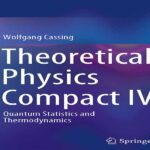
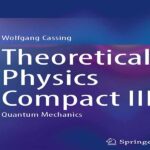

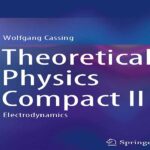
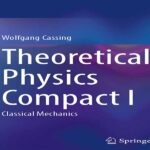


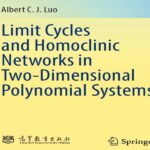


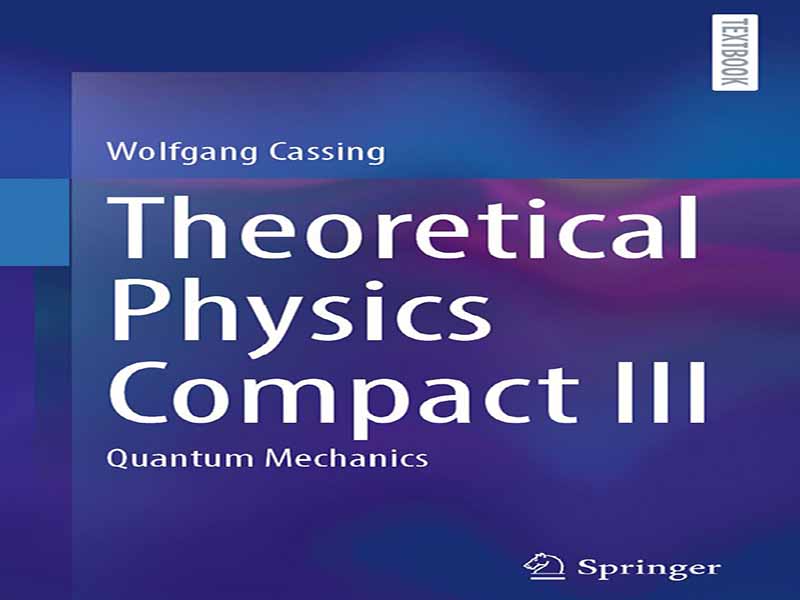



















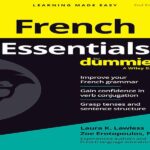


نظرات کاربران